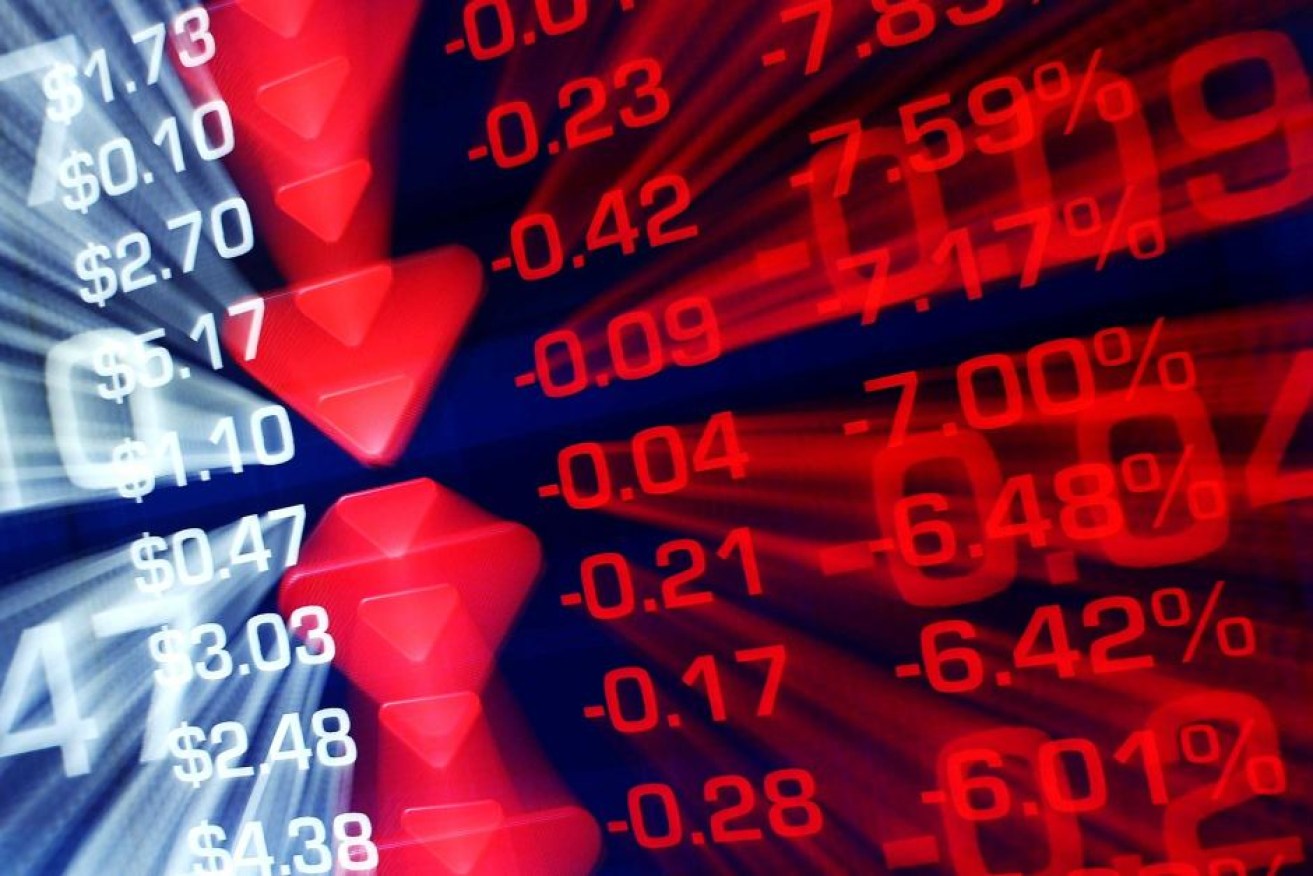Dramatic Wall Street ‘correction’ pushes Aussie shares to new low


$35 billion was wiped off the ASX early on Friday, before a partial recovery.
The Australian share market suffered more losses worth $20 billion on Friday after a night of carnage took US markets into official correction territory.
Two of the three major US stock market indices – the S&P 500 and the Dow Jones – are now both down 10 per cent from their January highs.
A market slump officially becomes a correction when it passes 10 per cent.
The NASDAQ, the third major index in the US and the one that includes the big tech names like Apple, Google, Amazon and Facebook, was down 9.7 per cent – just 30 basis points short of a correction.
Losses in Australia were not as severe, with the ASX 200 at one point down 1.5 per cent, before recovering much of those losses to close down 0.89 per cent.
That brought total losses to around 5 per cent, well short of a correction.
Click here to see how individual Aussie stocks fared over the week.
Other Asian markets fared worse. Hong Kong’s Hang Seng was down 3.8 per cent for the day, bringing total losses to 11.7 per cent – well past correction territory.
Japan’s Nikkei 225 was down 3.2 per cent at lunch break (yes, the Japanese market closes for lunch) on Friday. That brought total losses to 12.2 per cent.
What’s behind the fall?
Most analysts agree the reasons for the correction have to do with higher bond yields, higher interest rates, and the threat of rising inflation in the US.
These factors make shares less attractive for a number of reasons. Higher bond yields and interest rates make bonds a more viable alternative to shares – they give a reasonable return without nearly as much risk as shares.
And the threat of higher inflation increases the chance that the US central bank, the Federal Reserve, will further hike interest rates in an effort to cool the market.
This all marks a momentous shift. Interest rates in the US, the UK and Europe have been at rock bottom for the best part of 10 years – a stubborn legacy of the 2008 global financial crisis.
Things are different in Australia. Official interest rates here, while at a record low of 1.5 per cent, are still nowhere near the lows seen in the US and UK. And while the Reserve Bank says the next move will likely be a rate hike, this is unlikely to happen any time soon.
Likewise, inflation remains below the Reserve Bank’s target rate of 2-3 per cent, and is not projected to shoot beyond that.
Shane Oliver, chief economist at AMP, said another, more complicated factor was also at play in the recent slump – involving the exotic “volatility” investment products which allow investors to bet on market volaltility (and require a PhD in finance to understand).
“[T]he speed of the pull back is being exaggerated by the unwinding of a large build up of so-called short volatility bets (ie bets that volatility would continue to fall) via exchange traded investment products that made such bets possible,” Dr Oliver wrote in his blog on Friday.
“The unwinding of such positions after volatility rose further pushed up volatility indexes like the so-called VIX index and that accelerated the fall in US share prices.
“Quite why some investors thought volatility would continue to fall when it was already at record lows beats me, but this looks to be another case of financial engineering gone wrong!”
Overall, Dr Oliver said the correction in the US and Asian markets, and the slump in the Australian one, was not something to be overly concerned about, adding “in the absence of a recession, a deep bear market is unlikely”.
He said it was “best to turn down the noise during times like the present”.








